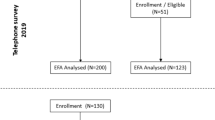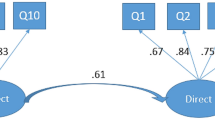Abstract
Introduction: The Stage-of-Change Model offers a theoretical framework for understanding people’s intention to change. The Lam Assessment of Stages of Employment Readiness (LASER) was developed to measure one’s psychological readiness to return to work after an extended period of unemployment due to disability. Method: The present study aimed to validate the Chinese version of LASER using a sample of Chinese industrial injured workers. Ninety subjects with previous history of work-related injuries participated in the study. Results: Principal component analysis revealed a two-factor solution which was found different from the original three-factor structure of LASER. Test retest reliability (ICC) ranged from 0.55 to 0.79. Findings suggested that human capital factors of the workers did not seem to contribute significantly to the participants’ readiness to return-to-work. Instead, the perceived pain levels became the major contributing factor. Discussion: The Chinese version LASER was useful for reflecting the readiness of injured workers returning to work. However, the pathology associated with the injuries together with the workers’ compensation system might influence the process of change which warrants further study area.
Similar content being viewed by others
References
Wassel ML. improving return to work outcomes. AAOHN 2002;50:278–85.
Tomassen PCD, Post MWM, van Asbeck FWA. Return to work after spinal cord injury. spinal cord 2000; 38: 51–5.
van der Giezen AM, Bouter LM, Nijhuis FJN. Prediction of return–to–work of low back pain patients sicklisted for 3–4 months. pain 2000;87:285–94.
Prochaska JO, DiClemente CC, Norcross JC. In search of how people change: Applications to addictive behaviors. american psychol 1992;47:1102–14.
Velicer WF, DiClemente CC, Prochaska JO, Brandenburg N. Decisional balance measure for assessing and predicting smoking status: Personality processes and individual differences. J Pers Soc Psycho 1985;48:1279–89.
McConnaughy EA, DiClemente CC, Prochaska JO, Velicer WF. Stages of change in psychotherapy: A follow–up report. psychother theory res prac train 1989;26:494–503.
McConnaughy EA, Prochaska JO, Velicer WF. Stages of change in psychotherapy: Measurement and sample profiles. Psychother theory res prac 1983;20:368–75.
Lam CS, McMahon BT, Priddy DA, Gehred-Schultz A. Deficit awareness and treatment performance among traumatic head injury adults. Brain injury 1988;2:235–42.
Lam CS, Chan F, McMahon BT. Factorial structure of the change assessment questionnaire for individuals with traumatic head injuries. Rehabil Psychol 1991;36:189–99.
Lam CC. A conceptual model for service delivery to people who are unemployed, Unpublished manuscript, Illinois institute of technology 1997.
Westwood R, Lok P. The meaning of work in chinese contexts: A comparative study. International. J Cross Cultur Manage 2003;3:139–65.
Berglind H, Gerner U. Motivation and return to work among the long–term sicklisted: An action theory perspective. Disabil Rehabil 2002;24:719–29.
Huang CY, Liao HY, Chang SH. Social desirability and the clinical self–Report Inventory: Methodological reconsideration. J Clinical Psychol 1998;54:517–28.
Franulic A, Carbonell CG, Pinto P, Sepulveda I. Psychosocial adjustment and employment outcome 2, 5 and 10 years after TBI. Brain Injury 2004;18:119–29.
Todd J, Iezzi A, Lafreniere K. The impact of psychosocial features of employment status on emotional distress in chronic pain and healthy comparison samples. J Behav Med 1996;20:241–56.
Acknowledgments
The authors thank The Hong Kong Workers’ Health Centre for the joint collaboration of this study, Mr. K.L. Leung, Mr. Patrick So, Mr. Frank Lai, Mr. Johnathan Chow, Mr. Ken Chung and Mr. Eric Fung for contributing their time and effort in the expert panel review, Mr. Yanwen Xu and Mr. Jiaqi Li for their effort on data collection. We would also like to thank all the participants of this project. This study would not have been possible without their support.
Author information
Authors and Affiliations
Corresponding author
Rights and permissions
About this article
Cite this article
Chan, H., Li-Tsang, C.W.P., Chan, C. et al. Validation of Lam assessment of employment readiness (C-LASER) for Chinese injured workers. J Occup Rehabil 16, 697–705 (2006). https://doi.org/10.1007/s10926-006-9050-3
Published:
Issue Date:
DOI: https://doi.org/10.1007/s10926-006-9050-3




